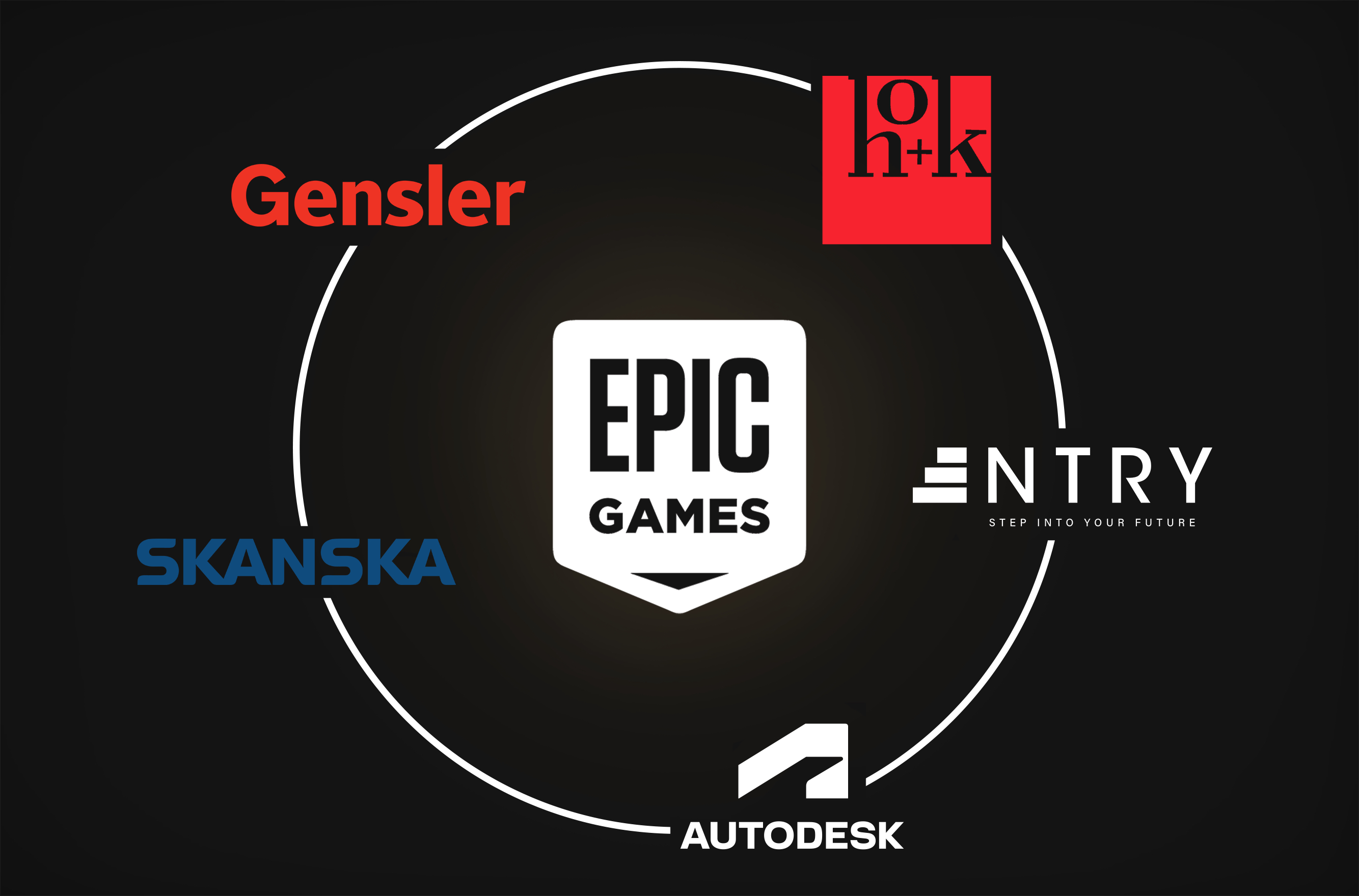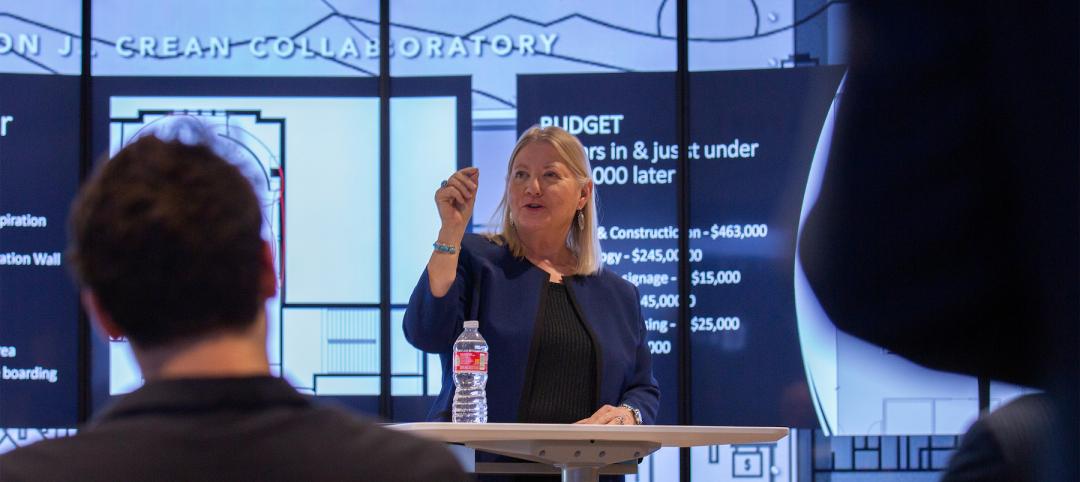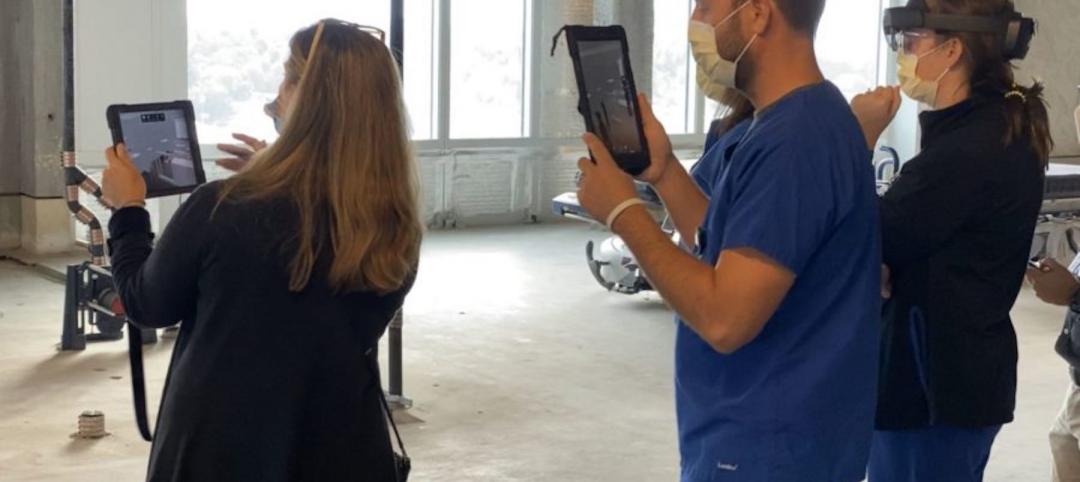Autodesk has announced its collaboration with Epic Games (yes, the people behind Fortnite) to accelerate immersive virtual modeling in the Architecture, Engineering, and Construction (AEC) industry.
What does designing and building homes have to do with video games? Well, Epic Games develops one of the most powerful real-time 3D design tools out there today: Unreal Engine. The latest iteration of the free tool, Unreal Engine 5, utilizes technical achievements to simulate hyper-realistic environments in real-time.
Unreal has already been used across many other industries: film and television, architecture, and even the automotive industry. It seems, though, that more and more AEC firms are beginning to dip their toes into the world of Unreal Engine’s computer-aided design.
AEC INDUSTRY FIRMS USING UNREAL ENGINE
HOK
Architecture firm, HOK, is one company utilizing Epic Games’ technology. Through the power of Unreal Engine alongside Epic Games’ other design tool, Twinmotion (more on that later), HOK is creating virtual reality (VR) walkthroughs to aid in a Canadian architectural renovation project.
These “brick-to-beam” interactive walkthroughs are meant to serve as a preview of what Canada’s iconic Centre Block will look like for years to come. HOK finds that using computer-aided design for this project is beneficial, as clients can clearly see what they like and don’t like about the model—all before spending billions of dollars on the project.
Skanska
Skanska Sweden used Unreal Engine with 3ds Max during the development of a 700,000 square-foot research facility in 2019. The firm leveraged the 3D modeling tools to create VR renderings of the project, as well as high-quality visualizations with realistic lighting scenarios.
“Using 3D tracking with a drone enabled us to visualize the 3D-modeled designs in actual surroundings, many years prior to completion,” says Ronald Cruz, BIM coordinator, Sweco Architects. “Rendered contents from 3ds Max proved beneficial regarding the communications between design, contractors, stakeholders, and the board of directors.”
VIRTUAL REAL ESTATE WITH UNREAL ENGINE 5
NTRY
NTRY, a Canadian cloud-based real estate company, has developed a digital tool for buyers to tour properties in the real estate market. Touting itself as the first real estate metaverse, NTRY utilizes the power of 3D CityScapes—powered by Unreal Engine—which specializes in creating digital interactive environments.
NTRY’s web-based tool—aimed mostly at brokers, agents, developers, and buyers—grants users the ability to access online virtual showings from anywhere in the world. Realtors are able to show clients multiple on-the-market homes from the comfort of their office.
This allows prospective buyers to “experience the heights of a downtown condo, the quietude of the suburbs, or walk through the bustling city streets,” according to NTRY. The tool includes the ability to change finishes and design choices in real-time, like swapping out a marble countertop for granite, for example.
V2i Realtime
Another beneficial use of Unreal Engine is being able to properly showcase the size and scale of projects. V2i Realtime is another company doing such things, consolidating all of a project’s data into a single 3D environment.
What this means, then, is that stakeholders and clients are able to explore the digital space from any device with a web browser. This is done through Pixel Streaming, in which visual “noise” (that can lead to misinterpretation, errors, and confusion) is reduced.
“Unreal Engine eliminates so much wasted time, energy, and dollars that we often see as a result of the need for third-party interpretation of traditional, and often technical, 2D data and reports,” says Luke Brannelly, founder, managing director, and creative director at V2i Realtime.
EPIC GAMES’ TWINMOTION TOOL
Autodesk
Epic Games has more tools than Unreal, too. In its recent partnership with Autodesk, Epic Games is giving those with Revit subscriptions the ability to access Epic’s other tool, Twinmotion, for free.
The two companies believe this integration between Autodesk Revit and Twinmotion will allow users to spend more time bringing their design ideas to life, and “less time handling complex data and technical workflows,” according to Marc Petit, vice president, Unreal Engine Ecosystem at Epic Games.
But what makes Twinmotion different from Unreal Engine?
Twinmotion
While Unreal marries real-time design with user interactivity, Twinmotion largely focuses on creating visualizations to be exported as images or 360 degree video. Though Twinmotion is powered by Unreal Engine, it’s built to be used more frequently by architects, urban planners, landscaping professionals, and even consumer product designers.
Epic Games touts Twinmotion’s “one-click sync” capability—being able to easily import designs from Revit, SketchUp Pro, Archicad, BricsCAD, Rhino, Vectorworks, and more.
With the new Autodesk partnership, Revit subscribers can now launch Twinmotion directly from the Revit ribbon.
WHAT IS THE BENEFIT OF COMPUTER-AIDED DESIGN?
There are dozens of other AEC and real estate firms not listed here that utilize Epic Games’ technology for their businesses. From Gensler to Foster+Partners, it seems more and more companies are adding tools like Unreal Engine to their design arsenal.
However, there’s a reason not every company is quickly jumping into the world of Unreal. Though Epic’s tools are designed to be intuitive, it still takes time and practice to transition workflows from software to software. Most firms may not have the financial resources to train people on Twinmotion/Unreal Engine. Plus, real-time high-quality virtualization doesn’t come cheap, as a decently high-powered computer needs to be used to get the full benefits of the software.
But when it is used, computer-aided design can prove to be a powerful visualization tool that aids in communication, clarity, and productivity.
Related Stories
AEC Tech | Sep 15, 2022
Register today! Live webinar: Minimize project expenses to stay on budget with 360° photo capture
Learn how reality capture technology like 360° photo capture allows your on-site team to document jobsites faster and more accurately than ever. This live webinar will take place September 20, 2022, at 2 ET / 1 CT.
AEC Tech | Aug 8, 2022
The technology balancing act
As our world reopens from COVID isolation, we are entering back into undefined territory – a form of hybrid existence.
Security and Life Safety | Jul 5, 2022
What AEC firms should look for in a cybersecurity partner
When looking for expert partners in cybersecurity, AEC firms will find quite a lot of companies claiming to be at the forefront of modern threats. Here are five key points to look for when choosing a cybersecurity firm.
Laboratories | Jun 29, 2022
The "collaboratory" brings digital innovation to the classroom
The Collaboratory—a mix of collaboration and laboratory—is a networking center being designed at the University of Denver’s College of Business.
Augmented Reality | Jun 22, 2022
Not just for POKÉMON GO anymore: how augmented reality is transforming architecture
By solving a long-standing communication problem, Augmented Reality (AR) is poised to make architecture quicker, nimbler, and more cost effective.
Healthcare Facilities | Jun 20, 2022
Is telehealth finally mainstream?
After more than a century of development, telehealth has become a standard alternative for many types of care.
Smart Buildings | Jun 1, 2022
Taking full advantage of smart building technology
Drew Deatherage of Crux Solutions discusses where owners and AEC firms could do better at optimizing smart technology in building design and operations.
BAS and Security | May 26, 2022
Can your intelligent building outsmart hackers?
ESD's security services studio leader Coleman Wolf offers tips, advice, and lessons for protecting real estate assets from cyberattacks.
Architects | Apr 26, 2022
Low-tech skills architects need to keep in a high-tech world
As architects continue to lean into learning and mastering the latest technologies, let us not forget the foundational, fundamental skills that are still expected by clients. RS&H National Design Director Philip Robbie explains.
AEC Tech | Apr 19, 2022
VDC maturity and the key to driving better, more predictable outcomes
While more stakeholders across the AEC value chain embrace the concept of virtual design and construction, what is driving the vastly different results that organizations achieve? The answer lies within an assessment of VDC maturity.















